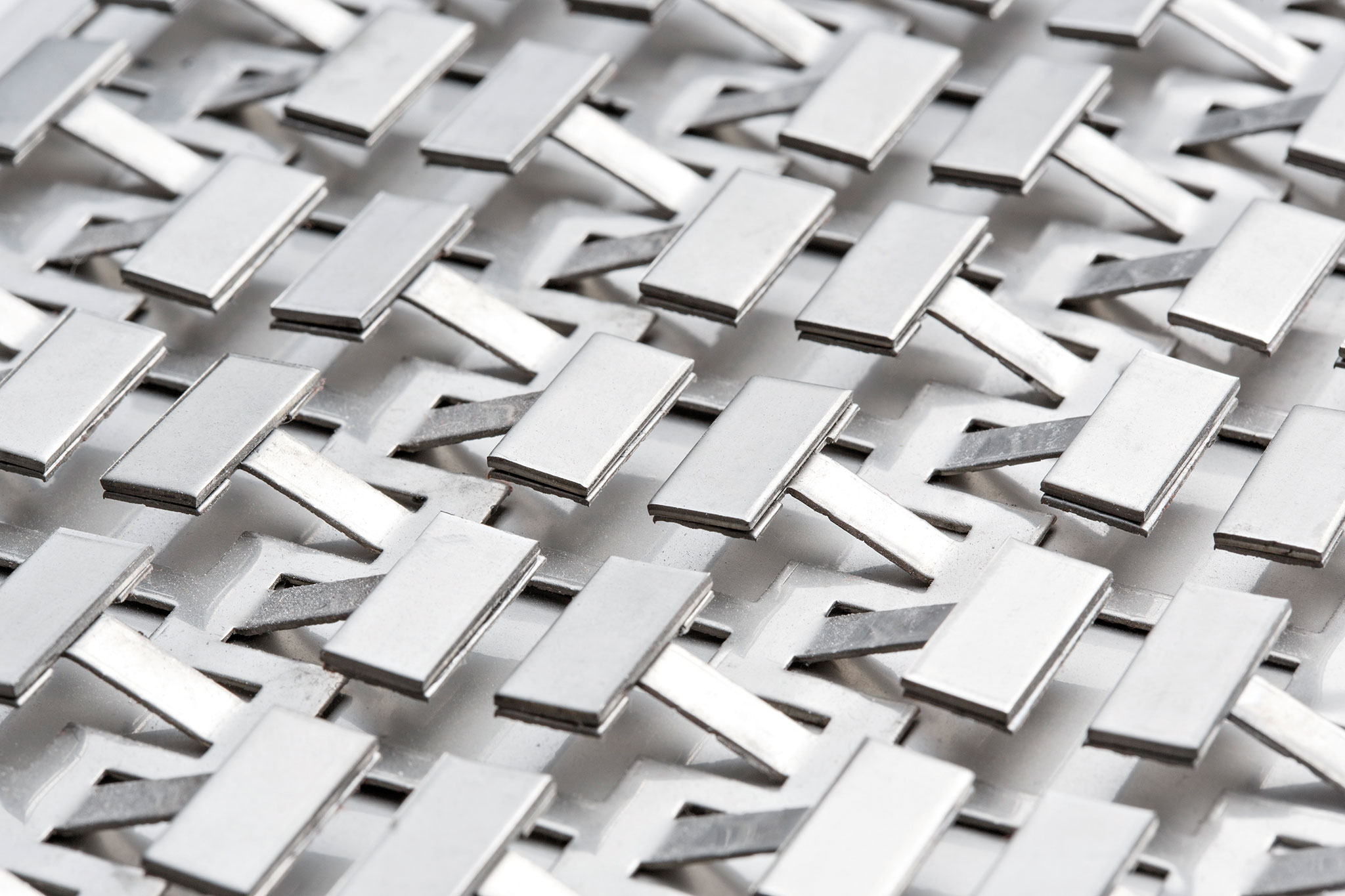
In addition to its many advantages, lightweight construction also has one big drawback. While objects with a large mass usually do not vibrate much at all, a low weight means the opposite: there is often very significant vibration and high levels of sound radiation. In order to make a car as quiet as possible, the car doors – which are often just made from thin sheets of metal – will generally be fitted with sheets of sound insulation material. While this is understandable from an acoustic designer’s perspective, it causes problems when it comes to lightweight construction objectives.
Researchers at the Fraunhofer Institute for Structural Durability and System Reliability LBF are looking to overcome this obstacle as they work toward building lighter structures: Vibro-acoustic metamaterials could help strike a balance between reducing mass and blocking out noise. “Metamaterials are artificially manufactured materials with properties that do not occur in nature,” explains Heiko Atzrodt, a researcher at Fraunhofer LBF. The interactions between this material and the special structure applied to it can be used for tasks such as influencing light waves and guiding them around an item so that it cannot be seen. Was Harry Potter’s Invisibility Cloak made from a metamaterial then? It’s quite possible!
In MetaVib, part of Fraunhofer’s internal PREPARE initiative, researchers at Fraunhofer LBF have developed a metamaterial with vibro-acoustic properties. “We create microstructure elements that can be integrated into the original material; this allows us to achieve virtual negative mass in certain frequency ranges,” explains project manager Mr. Atzrodt. “Because it is not possible for vibrations to be created or sound waves to spread where there is no mass.” The resonators that are used in this material must be arranged in a particular way to reduce sound: the spaces between them must be smaller than half of the wavelength of the oscillation that they need to reduce. Only then can they generate stop bands in the sound transmission – meaning the resonators can stop the airborne sound waves from spreading, convert them into structure-borne sound waves and finally absorb them. One of the first projects to use vibro-acoustic metamaterials (VAMM) was Silent Running.
The goal of this project was to develop a technology that can help minimize micro-vibrations in rocket components. In space travel, it is important to not only minimize weight, but also ensure minimal vibrations to avoid affecting measurements taken on board using optical instruments. In July 2023, the VAMM technology was awarded a prize for being among the best ideas to be submitted by a research institution to the INNOSpace Masters competition since it began. INNOSpace Masters is a competition initiated by the German Aerospace Center (DLR) to recognize innovations in space travel. One advantage of vibro-acoustic metamaterials is that they are not limited to a certain material. “Wood, rubber, residual materials, recycled materials – anything is possible,” says Mr. Atzrodt. “That means specific materials can be used that reduce not just the weight of a product, but its carbon footprint as well.” In the MetaVib project, in addition to investigating how metamaterials can be used as sound insulation in car doors, researchers are developing other forms of VAMM with functions that can be individually customized. Mr. Atzrodt explains: “We now have a standard catalog that lists all the variations of resonators and materials we can use, which makes it easier to develop a solution for a specific case.”
As part of a new project, Fraunhofer LBF is putting an innovative technology for glass sound barriers into application in collaboration with ASFINAG, the Austrian public corporation that manages the country’s highways. These barriers will help to lower noise levels by up to 20 decibels. Reducing noise levels by just 6 decibels is enough to halve the amount of sound perceived by the human ear. The VAMM barriers will soon be tested on certain Austrian highways and expressways.